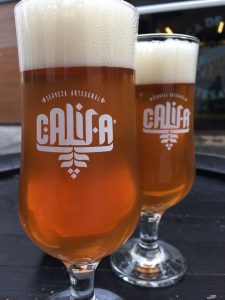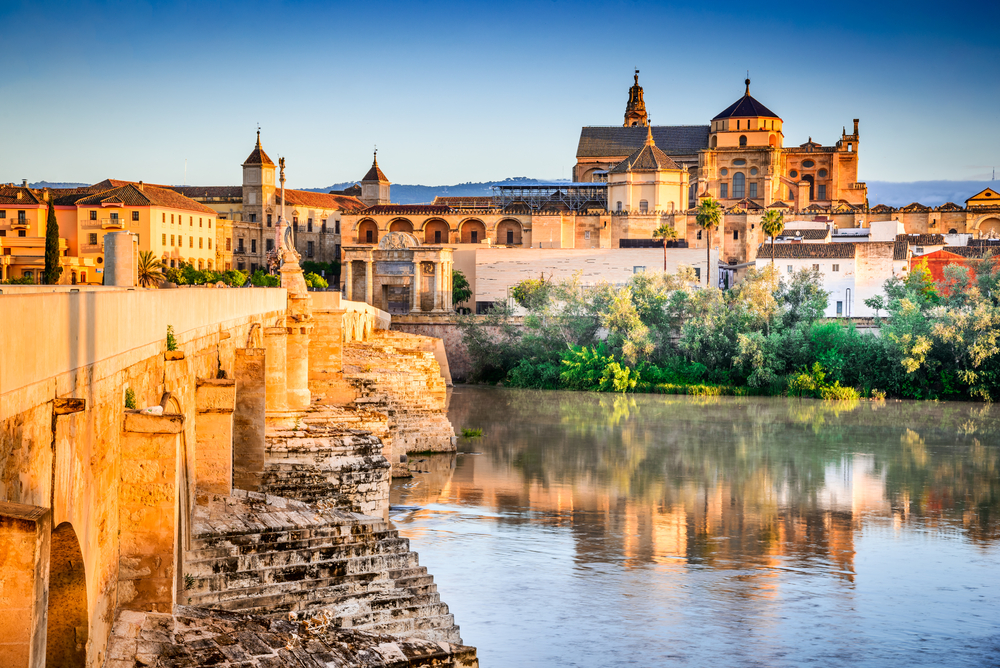If you only need one reason to visit Córdoba, it would be to see the magnificent Mezquita. But there is so much more to this charming city, with its quaint plazas reached via winding streets festooned with flowers, verdant patios, honey-coloured stone buildings adorned with wrought iron balconies and history oozing from between every flagstone.
Córdoba was once the most cultured city in Europe, with scholars travelling from far and wide to study in its university and research in its library. Today, visitors flock to see the famous Mezquita, the patio’s flower displays in May and much more. InSpain.news’ Guide to Córdoba shows you the best places to visit in this attractive city.
Related post: Córdoba’s patio festival
If you’re driving to Córdoba, often the best place to park is on the opposite side of the river to the Mezquita. Not only is it good for parking, but it also gives you a magical view across the Roman bridge to the mosque-cathedral. It is on the far side of the river that we start our Guide to Córdoba.
Places to visit
Calahorra Tower
At the Roman Bridge, is a defensive tower from the Muslim era: the Calahorra Tower. An historical monument, it houses the museum of Al-Andalus which traces the co-existence of the Jews, Muslims and Christians in the region. The tower has a great view over the bridge and river.
The Roman Bridge
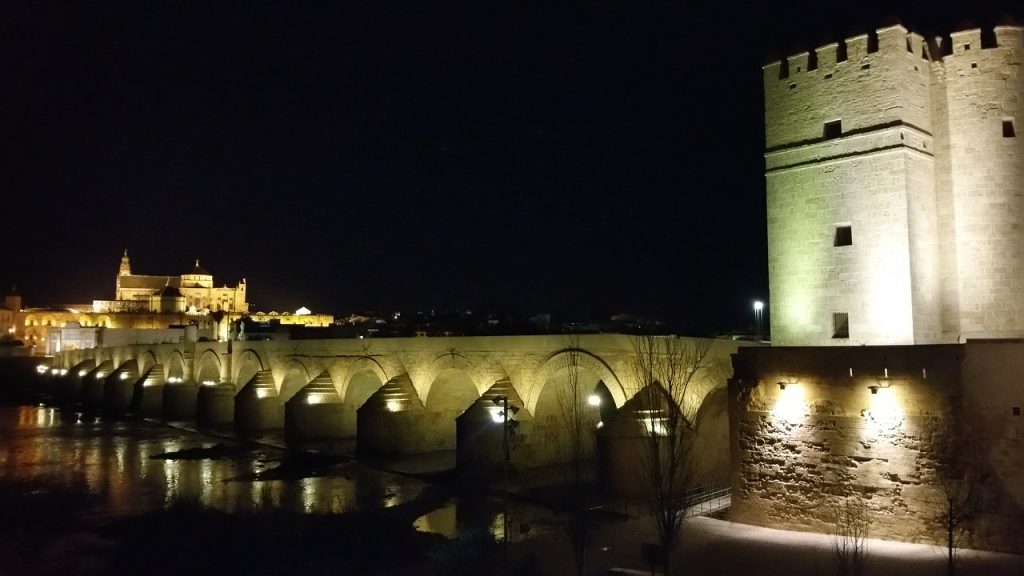
Built in the 1st century BC, it was the only bridge in the city for nearly 20 centuries and the main access to Cordoba. Now pedestrianised, it gives you the first glimpse of the Mezquita. There are wonderful shots of the sunset and the old city to be taken from here.
Bridge Gate
The Puerta del Puente is a Renaissance gate built in the 16th century to commemorate a visit by King Philip II. It is on the site of the previous Roman gates, linking the city with the Roman bridge and the Via Augusta.
The Mezquita
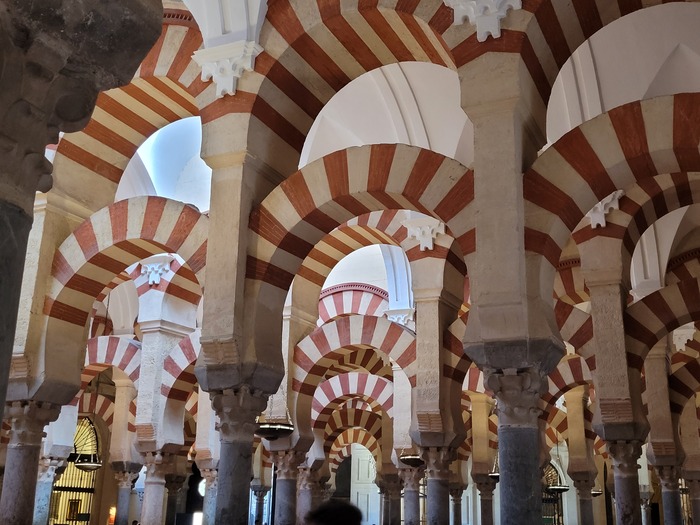
The mosque-cathedral is the emblem of Córdoba. From the shaded Patio de las Naranjas with its orange, palm and cypress trees and fountains, through the 14th century Puerta del Perdón, to the interior itself, there is so much to admire.
The interior is a mesmerising series of double arches, with the surprise of a Christian cathedral in its midst.
You can buy advance tickets to the Mezquita online here.
For an insight into Córdoba’s Muslim history, read InSpain’s article.
Alcázar de los Reyes Cristianos
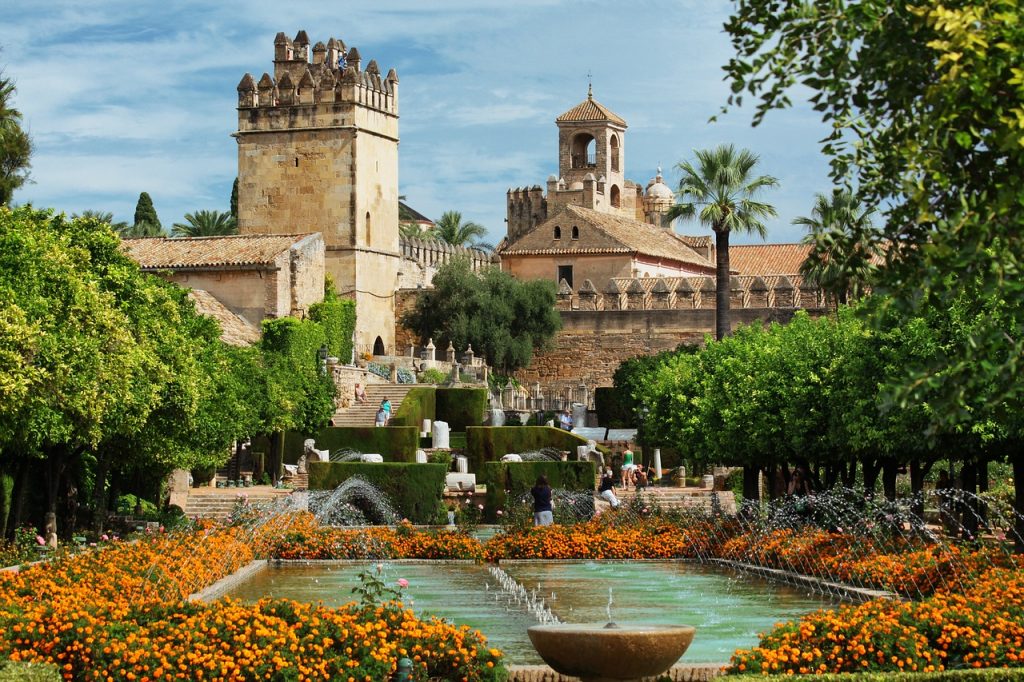
The Alcázar de los Reyes Cristianos (Alcázar of the Christian Kings in English) served as a residence for Catholic kings, but was also the headquarter of the Holy Office during the inquisition. At that time, it was converted to a prison.
The interior has Roman mosaics, Moorish patios, and royal baths. Climb one of the four towers and enjoy spectacular views across the city and, the highlight of the Alcazar, its gardens. Orange trees line the paths while fountains and ponds glisten in the sunlight. It’s a beautiful setting, and a refreshing place to sit and take in the wonders.
The Jewish Quarter (La Judería)
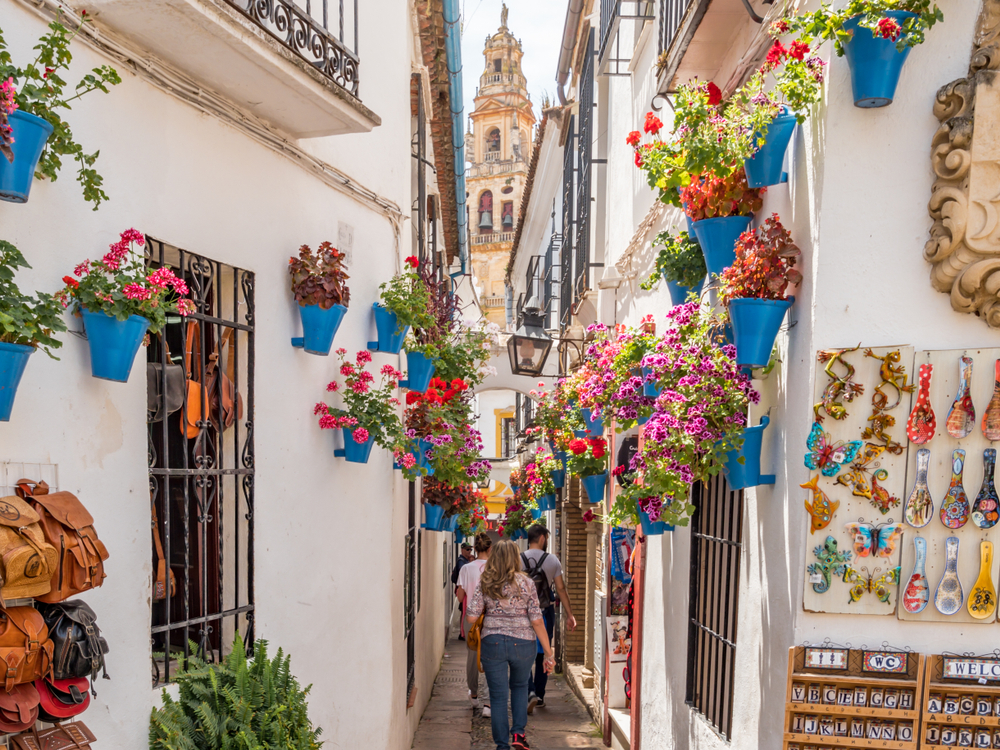
Pass through the Almodovar Gate, surrounded by its high walls and battlements, into La Judería, the old Jewish quarter of Córdoba.
The typical Andalucian streets of whitewashed facades includes La Calleja de las Flores. This is Córdoba’s most famous alleyway with fantastic views of the Mezquita. This is one of the four UNESCO World Heritage Sites in the city.
Synagogue
Constructed in 1315, this small synagogue hasn’t been used as a place of worship since the expulsion of Jews in 1492. Decorated with extravagant stucco work, there is an upper gallery for women. This is probably the best testament to Jewish existence in medieval Andalucia.
Casa de Sefarad
Once connected by tunnel to the synagogue, the Casa de Sefarad is devoted to the Sephardic (Iberian Peninsula Jewish) tradition. Different rooms cover food, domestic crafts, ritual, music, prominent Jews of Córdoba and the Inquisition. There’s also a section on the women intellectuals of Al-Andalus.
Plaza de las Tendillas and Plaza de la Corredera
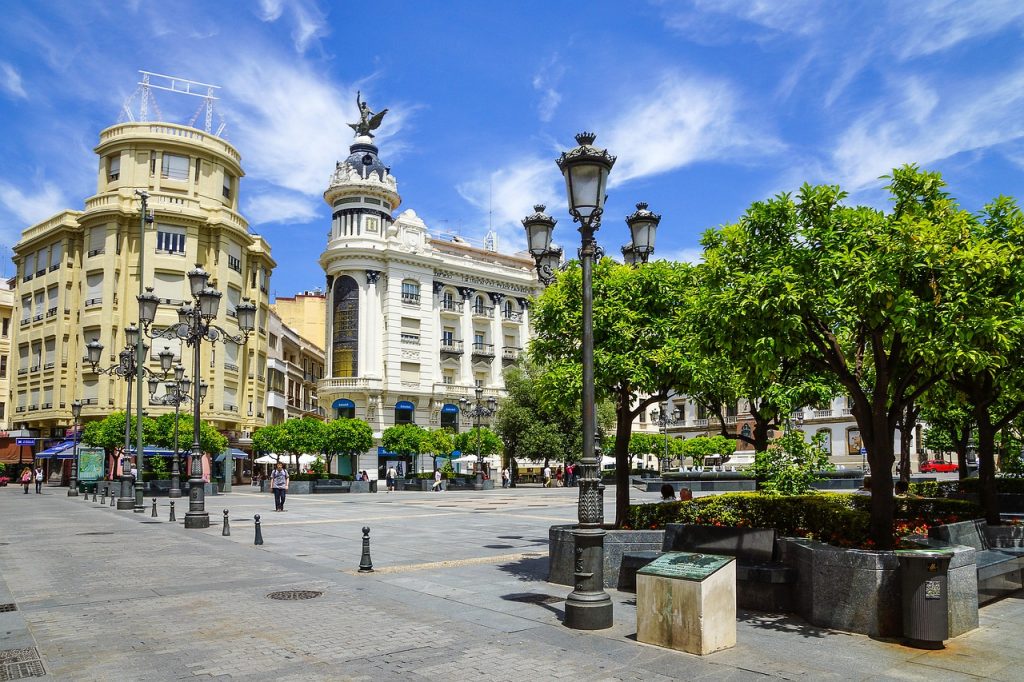
A range of architectural styles lines the Plaza de las Tendillas, whilst fountains jet water in the centre. A popular place for meals and drinks, from here you can walk to Plaza de la Corredera past the Roman temple.
In front of the town hall, the temple has pretty impressive dimensions and is viewable from the street. From there you’ll head directly to the Plaza de la Corredera, whose rectangular shape and arcades recall the classic Plaza Mayor you’ll find in Madrid and Castile. This style is unique to Andalucia and has been used parties, markets, bullfights and executions. Markets and bars are the more common occurrences now.
Viana Palace
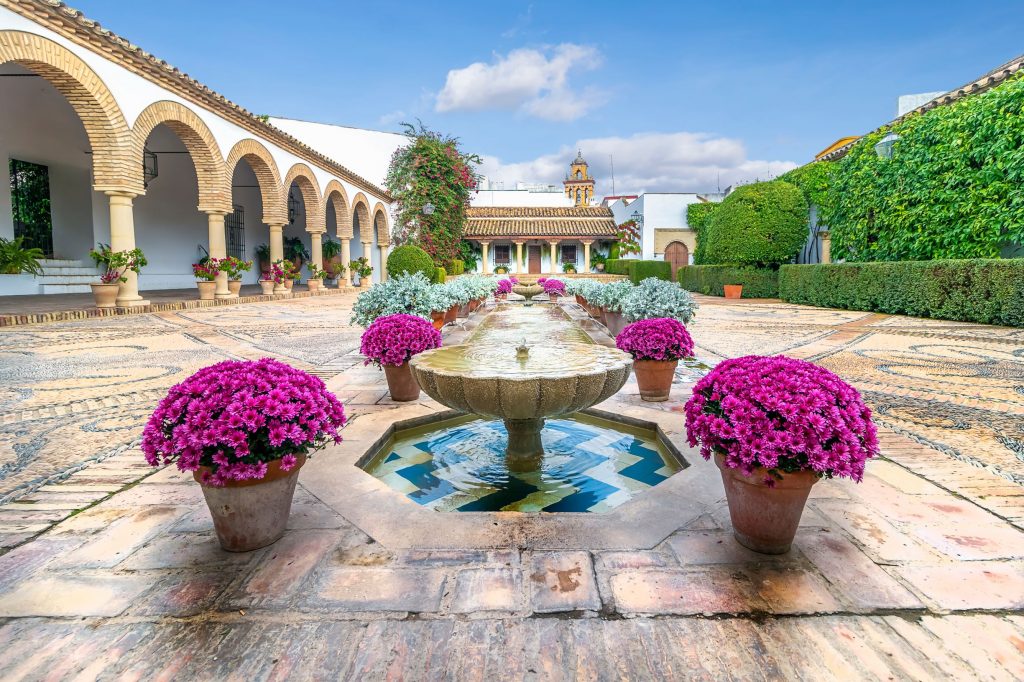
A ten-minute stroll from Plaza de la Corredera and you’ll find yourself at the Viana palace. Famous for its 12 patios, particularly vibrant during the May Flowers, there’s also an impressive collection of paintings, ancient dishes and tapestries.
Tickets can be booked on the palace’s website.
Museums of Córdoba
In the heat of an Andalucian summer, you may want to head indoors for some welcome air-conditioning. A museum is just the place to do that, and learn more about this fascinating city. Some of the best museums are:
The archaeological museum
The fine arts museum
The bullfighting museum
The ethnobotanical museum
The Julio Romero de Torrez museum
The gallery of the inquisition
What to eat and drink
Salmorejo
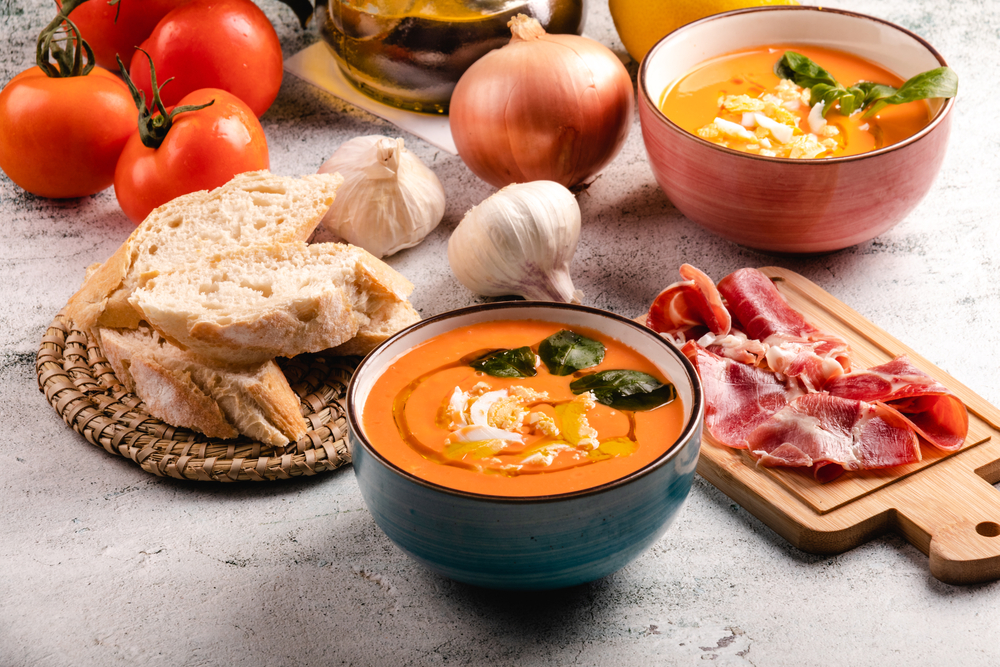
A cold soup, similar to gazpacho, made of tomato, olive oil, bread crumbs, garlic, vinegar on which they put small pieces of Serrano ham and eggs. Wonderful for a hot summer day.
Flamenquin
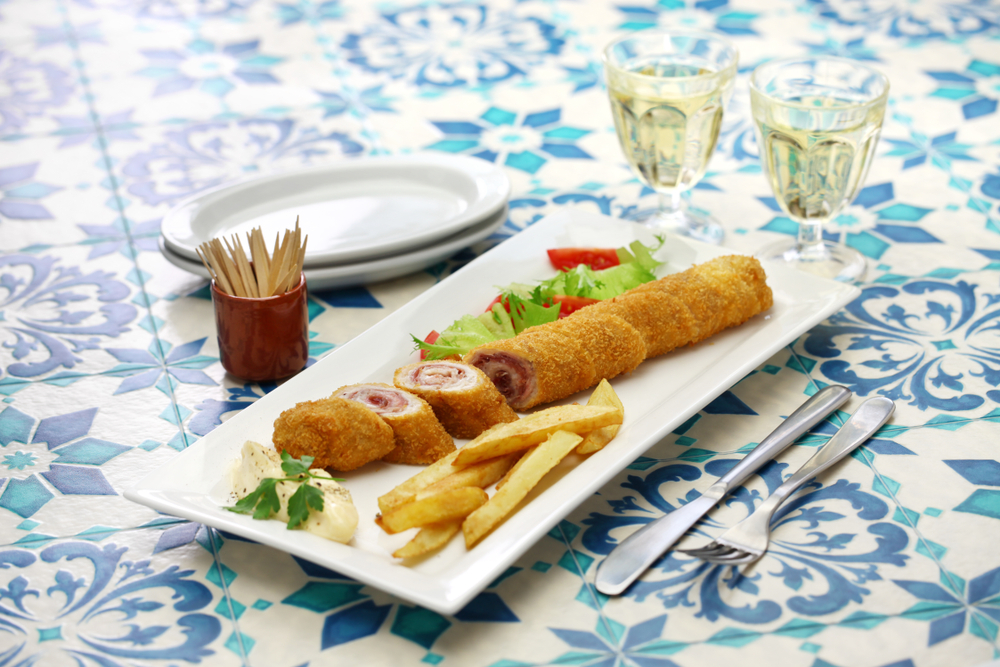
Flamenquín consits of slices of Serrano ham wrapped in pork loin pieces, coated with egg, breadcrumbs, and then deep-fried.
Pastel de Cordobés
Made in a circular shape from puff pastry Pastel de Cordobés (Cordoba cake) is filled with sugared angel hair made from fruit and Serrano ham basted in egg and baked.
Montilla Moriles Wine
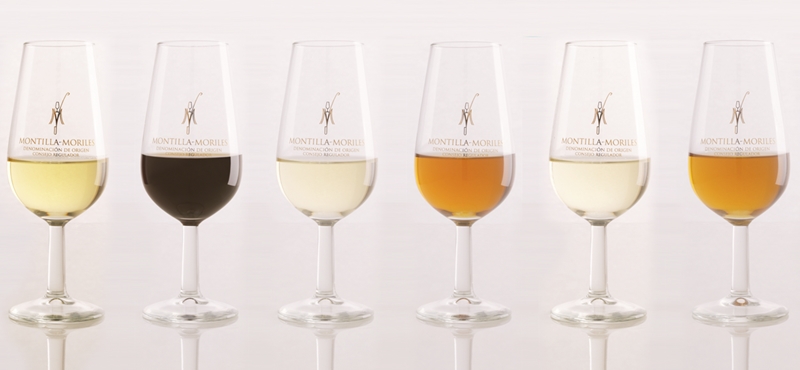
Like sherry and produced using the same technique except with Pedro Ximenez grapes, Montilla-Moriles is a sweet dessert wine with a note of almonds. Best sipped in a traditional bar.
Mazamorra de Almendras
Considered the antecedent of Salmorejo, Mazamorra de Almendras is a cold soup that dates back to the Roman treaty of Apicio. Consequently, it is made from a mash of bread, oil, vinegar, water, and garlic, tomato was a later addition to the recipe.
Alcachofas a la Montillana
Typical of Cordoba gastronomy Alcachofas a la Montillana is generally a starter: artichokes cooked in the local Montillana wine.
Califa Beer
Most of the Andalucian regions have their own beer, in Córdoba it’s Califa. The microbrewery also serves as a bar.
